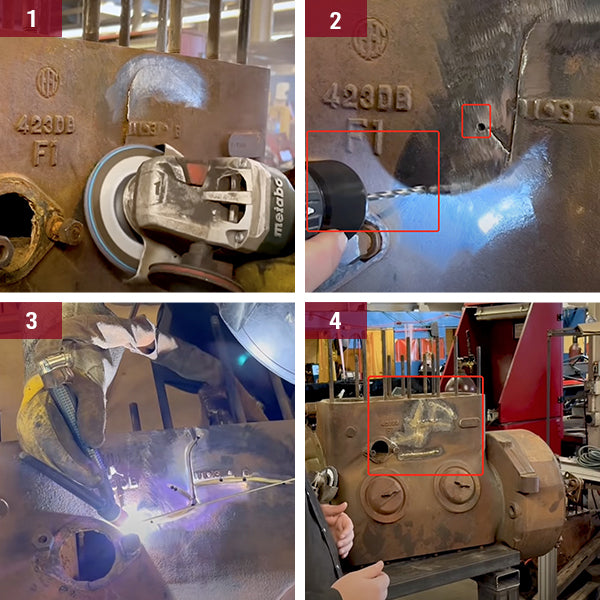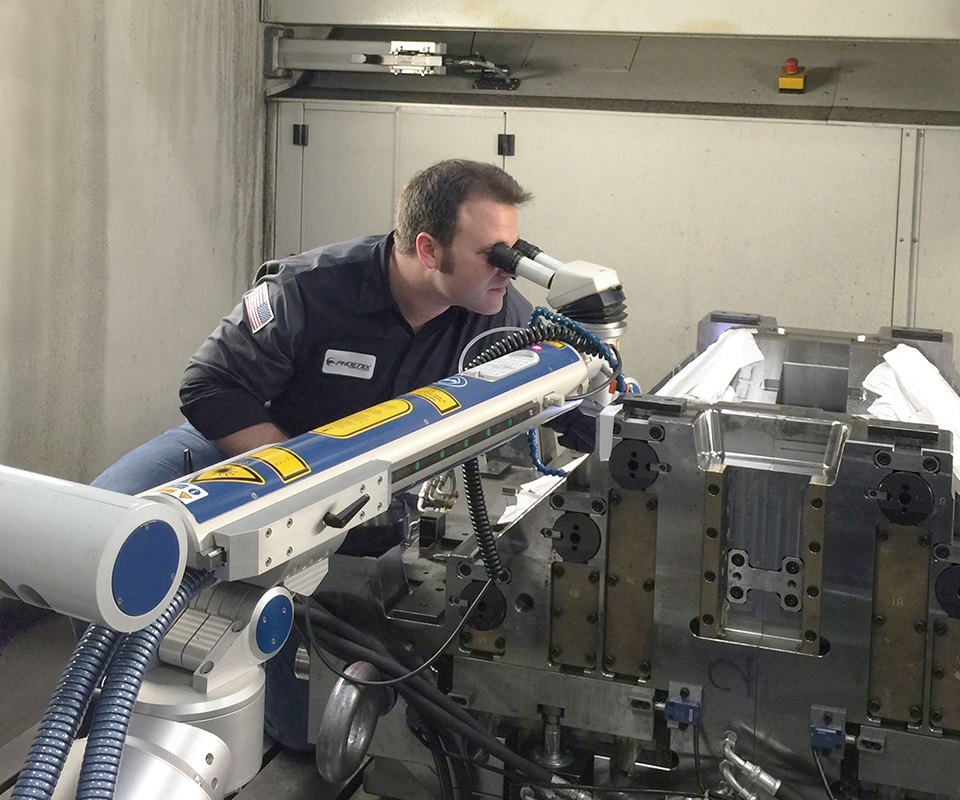Causes of weld porosity and how Belgrade Welding fixes them
Wiki Article
Typical Welding Repair Work Issues and How to Address Them Successfully
Welding fixings usually experience a series of concerns that can threaten the stability of the end product. Typical troubles consist of poor infiltration, porosity, and imbalance, amongst others. Each problem presents special obstacles that require particular methods for resolution. Understanding these problems is crucial for welders aiming to enhance their abilities and outcomes. This conversation will certainly discover these usual welding fixing concerns and reliable techniques to resolve them.Poor Penetration
Inadequate infiltration occurs when the weld metal stops working to fully fuse with the base material, causing weak joints and prospective architectural failings. This issue typically comes from inadequate warm input, wrong electrode angle, or improper welding rate. Welders may come across inadequate infiltration because of a miscalculation of the necessary parameters for a particular material thickness or kind. In addition, contamination on the base material's surface can impede efficient bonding, worsening the trouble. To attend to inadequate penetration, welders ought to ensure appropriate settings on their devices and keep a tidy work surface. Regular assessment of welds is recommended to recognize any deficiencies early, permitting for prompt improvements and the prevention of jeopardized architectural integrity in bonded assemblies.Porosity
Porosity is a common problem in welded joints that materializes as small gas bubbles entraped within the weld metal. This problem can compromise the honesty of the weld, resulting in lowered strength and possible failure under anxiety. Montana Mobile Welding and Repair Belgrade Fabrication. Porosity usually develops from contamination, wetness, or improper welding techniques, which permit gases to escape into the liquified weld pool. To address porosity, welders should assure correct surface preparation, keep a tidy functioning environment, and utilize ideal welding criteria. Furthermore, choosing the best filler product and securing gas can reduce gas entrapment. Routine assessment and screening of welds can aid identify porosity early, ensuring prompt rehabilitative actions are taken, consequently protecting the quality and dependability of the welded frameworkImbalance
Imbalance in welding can develop from numerous variables, including inappropriate configuration and thermal growth. Recognizing the origin is essential for effective resolution. Several correction strategies are available to straighten parts and assure structural stability.Root causes of Imbalance
Welding misalignment frequently stems from a selection of underlying issues that can compromise architectural honesty. One primary reason is inappropriate fit-up of components prior to welding, which can result in voids and uneven surfaces. Variants in thermal development throughout the welding procedure can additionally lead to distortion, particularly if the materials being signed up with have various coefficients of expansion. Furthermore, poor clamping and fixturing may fail to hold parts firmly in position, bring about activity during welding. Badly conserved tools, consisting of welding equipments and tools, might present inconsistencies in the weld bead, more contributing to misalignment. Driver mistake, stemming from insufficient training or experience, can additionally play a considerable duty in developing misaligned welds.
Improvement Techniques Available
Attending to misalignment effectively calls for a mix of corrective strategies tailored to the certain issues available. One typical approach is using fixtures or jigs to hold components in the correct setting during welding, making certain consistent positioning. Furthermore, preheating the products can help decrease distortion and improve fit-up. For substantial imbalance, mechanical adjustment methods, such as utilizing hydraulic jacks or clamps, can be used to remedy the placement before welding. Post-weld warmth treatment might additionally be essential to alleviate tensions brought on by imbalance. Cautious examination and change throughout the setup phase can protect against imbalance issues from coming to be significant issues, advertising a smoother welding procedure and boosting total structural stability.Distortion
Distortion is a common challenge in welding that can develop from different elements, consisting of irregular home heating and air conditioning. Understanding the root causes of distortion is essential for carrying out efficient avoidance methods. Addressing this problem not just improves architectural integrity but additionally improves the total high quality of the weld.Sources of Distortion
When based on the extreme warmth of welding, materials typically undergo adjustments that can cause distortion. This sensation primarily develops from thermal growth and contraction throughout the welding process. As the weld area warms up, the material increases; upon cooling, it acquires, which can produce inner stress and anxieties. Furthermore, uneven home heating throughout a workpiece can exacerbate these tensions, resulting in warping or flexing. The sort of material likewise plays a substantial role; metals with varying thermal conductivity and coefficients of growth may react in different ways, bring about unpredictable distortions. Moreover, poor joint layout and insufficient fixturing can add to imbalance throughout welding, increasing the chance of distortion. Comprehending these reasons is crucial for effective welding repair service and prevention strategies.Prevention Techniques
Reliable prevention methods for distortion during welding concentrate on regulating warm input and guaranteeing appropriate joint design. Maintaining a constant heat input aids websites to lessen thermal development and contraction, which can result in distortion. Making use of methods such as pre-heating the workpiece can also reduce the temperature level gradient, promoting uniform home heating. In addition, picking appropriate joint styles, such as T-joints or lap joints, can enhance stability and minimize stress concentrations. Implementing appropriate fixturing to secure the workpieces in position further aids in maintaining alignment throughout the welding process. Ultimately, staggered welding sequences can disperse heat much more uniformly, avoiding localized distortion. By using these approaches, welders can considerably reduce the chance of distortion and enhance the total high quality of their welds.Cracking
Splitting is an usual concern come across in welding fixings, commonly arising from different aspects such as incorrect air conditioning rates, product selection, or poor joint prep work. The occurrence of splits can significantly endanger the integrity of the weld, bring about prospective failings during operation. To address this concern, welders should initially examine the source, making sure that materials are suitable and properly picked for the specific application. Additionally, managing the air conditioning rate throughout the welding process is important; fast air conditioning can generate stress and lead to breaking. Appropriate joint design and prep work also add to decreasing the risk. Executing these methods can enhance weld top quality and sturdiness, eventually lowering the probability of cracking in ended up weldments.
Insufficient Combination
A substantial problem in welding repairs is incomplete fusion, which happens when the weld steel does not sufficiently bond Find Out More with the base product or previous weld passes - Montana Mobile Welding and Repair Belgrade Fabrication. This issue can cause weaknesses in the joint, potentially compromising the integrity of the bonded structure. Aspects adding to incomplete fusion consist of not enough warm input, incorrect welding strategy, and contamination of the surfaces being signed up with. To address this issue successfully, welders must ensure correct pre-weld cleansing and surface prep work, as well as change their welding criteria to achieve appropriate penetration and fusion. Regular evaluation throughout the welding process can additionally help determine insufficient combination early, enabling timely restorative measures to boost the overall quality inverter welder of the weldOverheating
While welding repairs can boost structural honesty, overheating provides a significant difficulty that can bring about product deterioration. Excessive heat during welding can modify the mechanical residential properties of steels, leading to lowered toughness, enhanced brittleness, and bending. This sensation is specifically vital in high-stress applications where structural dependability is extremely important. Recognizing overheating can entail visual inspections for discoloration or distortion, as well as monitoring temperature during the welding process. To mitigate the dangers connected with getting too hot, welders should use proper methods, such as controlling heat input, readjusting travel rate, and making use of appropriate filler materials. Furthermore, implementing pre- and post-weld heat therapies can assist bring back product homes and boost the overall quality of the repair, guaranteeing long-lasting efficiency and safety and security.Often Asked Concerns
What Are the Common Indications of a Welding Defect?

Just How Can I Examine My Welds for High quality?
To evaluate welds for high quality, one can utilize aesthetic assessments, ultrasonic screening, and radiographic approaches. Each strategy guarantees architectural integrity, determines flaws, and confirms adherence to specified standards, ultimately boosting the reliability of the welded joints.What Security Precautions Should I Take While Welding?
When welding, one should prioritize safety by wearing appropriate individual safety tools, making certain correct air flow, protecting flammable products away, maintaining a tidy work space, and understanding surroundings to avoid crashes and injuries.Can I Fix a Weld Without Redoing the Entire Joint?
Repairing a weld without redoing the whole joint is possible, depending upon the damage (Montana Mobile Welding and Repair). Methods such as grinding, adding filler product, or utilizing a welding procedure can successfully deal with details problems while protecting the surrounding frameworkWhat Tools Are Important for Efficient Welding Repair Works?
Important devices for effective welding repairs include a welding equipment, wire brush, grinder, protective equipment, clamps, and filler products. Each tool plays an essential function in ensuring high quality and security throughout the repair service procedure. Porosity generally develops from contamination, moisture, or incorrect welding methods, which allow gases to leave into the molten weld pool. Badly conserved devices, including welding devices and devices, might introduce disparities in the weld grain, further contributing to imbalance. When subjected to the intense heat of welding, products usually undertake adjustments that can lead to distortion. Splitting is an usual concern experienced in welding repair services, typically resulting from various variables such as improper cooling rates, material choice, or insufficient joint prep work. A significant problem in welding repair work is incomplete fusion, which happens when the weld steel does not appropriately bond with the base material or previous weld passes.Report this wiki page